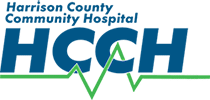February Is American Heart Month
Check Out Tips on Heart Healthy Living!
Live Heart Healthy
Don’t Smoke: Not smoking may be the best thing you can do to improve your heart and overall health. The results can be dramatic. After a year of not smoking cigarettes, the risk of heart disease is cut in half.
Get Moving: Regular physical exercise is so beneficial for your health. It reduces the risk of heart disease, high blood pressure, high cholesterol, Type 2 diabetes, and stroke. It can also help you lose weight. Aim for 150 minutes a week of moderate exercises, such as walking, or 75 minutes a week of vigorous exercises, such as jogging. And remember, even activities like housekeeping or taking the stairs are good for you.
Eat Heart Smart: Avoid salt, sugar, alcohol, saturated fats (red meat, full-fat dairy), and trans fats (fried fast food, chips, and baked goods). Instead, load your plate with vegetables, fruits, beans, lean meat, fish, and whole grains.
Watch Your Pounds: Losing just a little weight helps your heart. Reducing your weight by as little as three percent (just six pounds if you weigh 200) can reduce certain fats in the blood and the risk of diabetes. Ask your primary care provider to check your Body Mass Index (BMI) to see if you are overweight or obese. Ideally, your BMI should be less than 25.
Manage Your Stress: Feeling stressed can lead to many unhealthy habits, such as smoking, drinking, or overeating. Regular physical and relaxing activities such as yoga can lower your stress level.
Know the Signs of a Heart Attack
Chest Pain or Discomfort: With most heart attacks, people experience uncomfortable pressure, squeezing, or pain in the center of the chest. The sensation may last more than a few minutes or go away and then return.
Discomfort in the Upper Body: Pain or discomfort can also occur in the neck, back, arms, or stomach.
Shortness of Breath: This can occur with or without chest pain.
Other Signs of a Heart Attack: Include nausea, lightheadedness, and breaking out in a cold sweat. In addition to chest pain, women are more likely to experience shortness of breath, nausea, vomiting, and back or neck pain.
Ask About Testing Options
Your primary care provider can choose from a long list of diagnostic tools to determine if you have heart disease.*
Electrocardiogram (ECG): An ECG tests your heart’s electrical impulses. It’s often used to check for an abnormal heart rhythm (arrhythmia).
Exercise Stress Test: This type of ECG test is usually performed when running on a treadmill or riding a stationary bike. The test checks your heart rate, blood pressure, and heart activity to see how it performs under physical exertion.
Echocardiogram (Ultrasound): This non-invasive test uses high-frequency sound waves to check the heart’s structure and to evaluate its blood flow. It’s often used to check your heart’s valves and chambers and the efficiency of your heart pumping blood.
Magnetic Resonance Imaging (MRI): An MRI uses powerful magnets and radio waves to produce hundreds of high-resolution heart images from many different perspectives. Sometimes a special dye is injected into the arteries to make the heart and its vessels easier to see.
CT Scan: This X-ray imaging technique produces cross-sectional images of your heart to check its structure and determine if there are blockages in the coronary arteries.
Cardiac Catheterization: Also known as a coronary angiogram, this specialized X-ray test can reveal how much your coronary arteries are clogged or blocked. A small tube (catheter) is inserted into an artery in your groin or wrist and then moves up inside the artery until it reaches your heart. After a special dye has been injected, X-rays are taken.
Holter Monitoring: This test uses a small, portable machine to record a patient’s heart rhythms over an extended period, usually 24 to 48 hours. The test analyzes the heart’s electrical activity and can detect heart rhythm problems that come and go and may not be apparent using a standard ECG.
After a Heart Attack or Stroke, Participate in Rehab
Cardiac rehabilitation is a structured, supervised exercise and education program for people who have had bypass surgery, angioplasty, heart failure, or other major heart conditions. *
The benefits of cardiac rehab are many. One study found that patients who completed a cardiac rehab program lowered their risk of death by 47 percent and their risk of having another heart attack by 31 percent. Unfortunately, only one in four eligible people for cardiac rehab participate in the program. The program usually lasts about three months and involves exercise training, emotional support, and education about reducing heart disease risk. For stroke rehab, the long-term goal is to help the stroke survivor become as independent as possible. Studies show that up to 85 percent of patients will learn to walk independently after six months of rehabilitation.
Sources: American Heart Association, Million Hearts
*The content of this article is informative and does not necessarily reflect available services at Harrison County Community Hospital. Ask us how we can help!
